#SINCLAIR ZX SPECTRUM
Text

source: Sinclair User Magazine - Oct 1984
#ZX Spectrum#Speccy#pc gaming#retro gaming#retro ads#retro computing#retro tech#techcore#Sinclair ZX Spectrum#Sinclair
112 notes
·
View notes
Text


computer objecthead but the computer is the head and they have to plug in an external monitor
have a big british punk sinclair zx spectrum
#oc#objecthead#android#computer#sinclair zx spectrum#it is a this machine kills fascists patch it just got weirdly cut off oops#eggsdraws#oc:zee
32 notes
·
View notes
Text




#Sinclair ZX Spectrum#retro computing#retro gaming#vintage#nerd stuff#technology#retro tech#pop art#ai art#artists on tumblr#illustration
9 notes
·
View notes
Photo

UK 1985
48 notes
·
View notes
Text
Tag 4: die britische Spielmaschine
Der ZX Spectrum von Sinclair ist DIE britische Spielmaschine aus den 80ern. Viele haben schöne Erinnerungen an die Zeit und die Spiele mit diesem Computer. Deshalb gibt es auch neue Reinkarnationen dieser Spielmaschine
Der vierte Beitrag in meiner Reihe von Beiträgen zur Neugestaltung der Ausstellung in meinem Computermuseum. Heute und an weiteren 29 Tagen stelle ich die Zusammenstellung meiner Ausstellungsstücke vor. Heute berichte ich über den Sinclair ZX Spectrum. Ein Meilenstein in der Homecomputerindustrie. Auch er feierte schon seinen 40. Geburtstag und er geht ein in die Geschichte als britische…
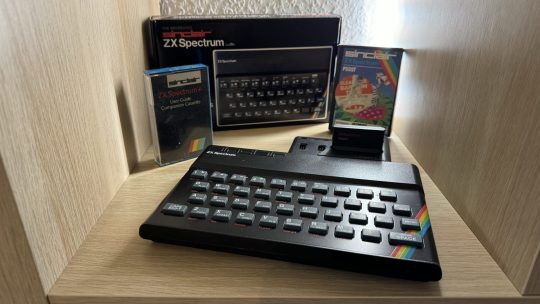
View On WordPress
0 notes
Text

Byte Bitten
As you've just got hold of the game, you'd love to spend time on it.
0 notes
Link
#PrinceWatercress#let's play#Classic Muncher#gaming#retrogaming#ZX Spectrum#Sinclair ZX Spectrum#longplay#Blog#Blogger#Blogspot
0 notes
Text
The Golden Age of the Video Game Arcade: Game Over.
The Golden Age of the Video Game Arcade: Game Over.
After 1987, for me at least, the video game arcade was on a downward spiral towards oblivion. So where did it all go wrong?
Thank you so much for joining me on my journey way back to 1979 and through the best years of arcade gaming and my childhood, up to 1987. The video game arcade era had been a massive part of my life, and I’m so glad I was involved in the very best of it.
Although I had my…

View On WordPress
#Gaming#Gaming nostalgia#Playstation#Retro Arcade Game#Retro Gaming#Sinclair Spectrum#Sinclair ZX Spectrum#Sony Playstation#video game#Video Game Arcade#Video Games
0 notes
Text

313 notes
·
View notes
Text

Sinclair ZX Spectrum 48k refitted with a new white casing.
60 notes
·
View notes
Text

Sinclair ZX Spectrum - 1983
source: archive.org
#ZX Spectrum#Sinclair#PC gaming#1980s#80s#retro computing#retro gaming#retro tech#retrocore#retrowave#speccy
213 notes
·
View notes
Text

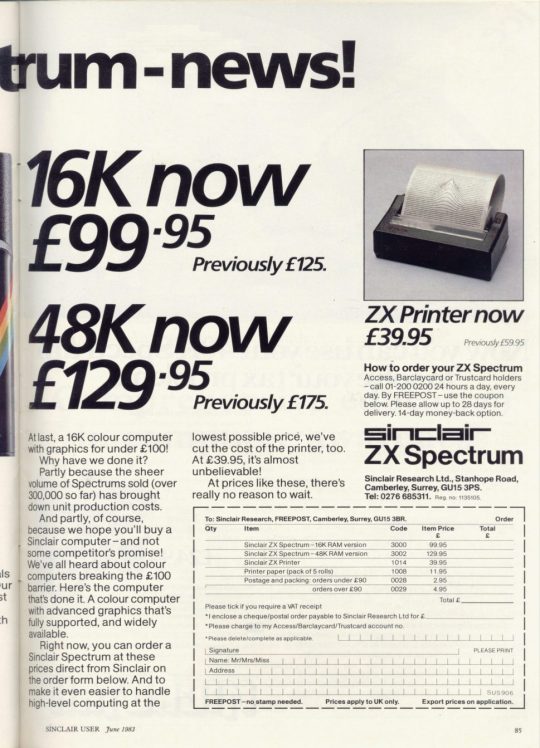
Sinclair User issue 15, June 1982,
ZX Spectrum 16k/48k print ad.
95 notes
·
View notes
Text


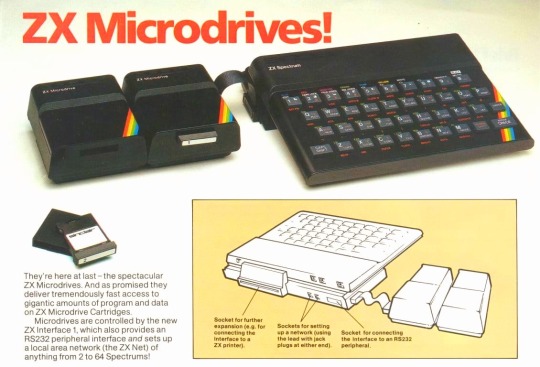



🇬🇧 Immerse yourself in the captivating world of computing through the Sinclair ZX Spectrum—a groundbreaking microcomputer that captured the imagination of an entire generation!
🌟 In 1980, the visionary British entrepreneur and scientist, Sir Clive Sinclair, entered the home computer market with the ZX80 priced at £99.95, marking the era's most affordable personal computer in the United Kingdom. A year later, the ZX81 hit the high street, introducing home computing to a generation, with over 1.5 million units sold.
💻 Released in 1982 by Sinclair Research Ltd., the Sinclair ZX Spectrum swiftly became one of the most iconic home computers of its time. It dominated the UK's computer sales market, fiercely competing against Commodore and Amstrad. This compact and budget-friendly machine brought computing into countless households.
🕹️ Powered by the Zilog Z80A CPU running at 3.5 MHz and equipped with either 16 KB or 48 KB of RAM, the ZX Spectrum sported a sleek, compact design resembling a keyboard with rubber keys, making it innovative and approachable. Its graphics and sound capabilities were ahead of their time, enabling vibrant games and applications.
⌨️ One of the ZX Spectrum's standout features was its vast library of games. From classics like "Manic Miner" and "Jet Set Willy" to innovative titles developed by enthusiasts, the Spectrum's game collection remains a cherished part of gaming history. The computer's BASIC programming language also inspired users to create their own software.
🖥 Despite modest hardware specifications, the ZX Spectrum nurtured a lively community of developers and enthusiasts, serving as a gateway into the world of programming and digital creativity.
🚀 Over its lifespan, the ZX Spectrum evolved with new models, including the ZX Spectrum+, ZX Spectrum 128, and ZX Spectrum +2, each offering enhanced performance and features while retaining the beloved design.
📺 The ZX Spectrum's impact extended beyond its hardware, playing a pivotal role in the British computing scene, inspiring future generations of programmers and entrepreneurs. Its legacy resonates in modern computing and gaming through emulators and remakes that keep its spirit alive.
📊 At the peak of its success and largely inspired by the Japanese Fifth Generation Computer program, the company established the "MetaLab" research centre at Milton Hall near Cambridge to pursue advanced projects like artificial intelligence, wafer-scale integration, and formal verification.
💔 Financial difficulties in 1985, brought on by the failures of the Sinclair QL computer and the TV80 pocket television, led Sinclair to sell the rights to its computer products and brand name to Amstrad in 1986. Sinclair Research Ltd continued as a one-man company, marketing Clive Sinclair's inventions until his passing in September 2021.
#techtime chronicles#old technology#companies#tech#technology#old tech#technews#information technology#corporations#electronics#sinclair research ltd#sinclair#zx spectrum#spectrum#england#british computing#computer legacy#computer science#computing#computers#computer#retro gaming#gaming#video games#innovation#amstrad#metalab#hardware#software#zilog
10 notes
·
View notes
Photo
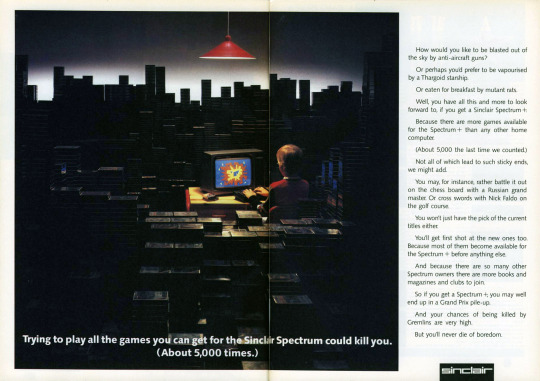
UK 1985
25 notes
·
View notes
Text
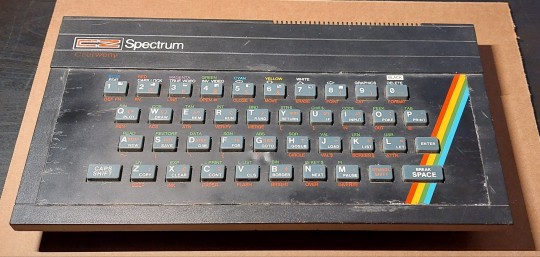
CZ Spectrum, version Argentina de la ZX Spectrum.
59 notes
·
View notes
Text

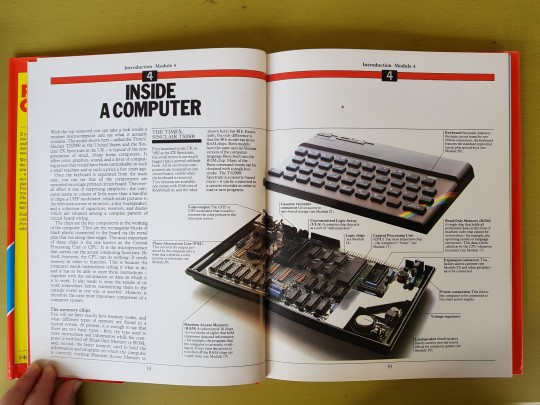





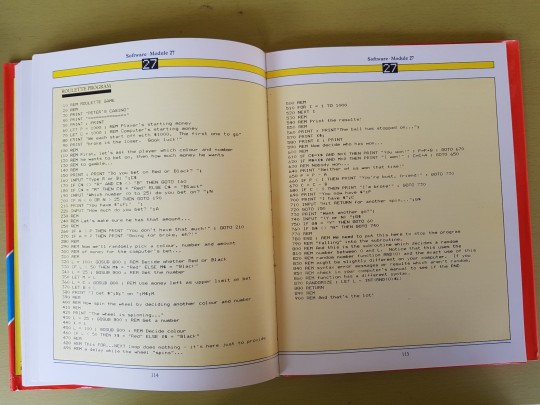


Selections from The Personal Computer Handbook by Peter Rodwell (1983)
Some of my thoughts while reading:
- I forgot how old ASCII is
- MOS 6502 my beloved (with 8086 jumpscare)
- That one page I misread as "Computer Erotica"
- Program listings printed on dot matrix and scanned as images for publication, because that was the best option - normal in magazines, a suprise in a hardcover book
- CP/M being a more noteworthy OS than something called MS-DOS
16 notes
·
View notes